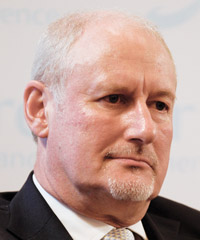News Backgrounder
Stubborn politicians threaten global deal
An aviation trade war is threatened if European politicians stubbornly insist it’s their way or no way with emissions trading scheme for airlines.
February 1st 2014
Its once again five minutes to midnight for airlines and the recalcitrant legislators of the European Union (EU). The European politicians must decide by the end of March if they will re-start the clock – as announced to a shocked industry last October - on an emissions trading scheme (ETS) for international airlines that fly into the countries of the European Union. Read More »
Tony Tyler, director general of the International Air Transport Association (IATA) said opposition to the European plan, which would see non-European airlines charged for their emissions over European airspace, is growing.
“A formal resolution of the International Civil Aviation Organisation (ICAO) Council, supported by 26 countries, urged Europe to take a different approach. India is reported to have instructed its airlines not to comply. Similar legislation is moving through the U.S. Congress. Other legal challenges are expected,” Tyler said.
“On December 16, the U.S. Secretaries of State and Transportation warned the U.S. would be compelled to take appropriate action if Europe does not re-think its plans,” said Tyler. The U.S. noted that at least 43 countries have publicly objected to Europe’s intention to re-start the ETS clock.
The European Commission’s original ETS was planned to charge airlines for their emissions from their points of departure worldwide to their arrival in the EU zone and their EU city destination. Cuntries including major powers, China, the U.S., India and Russia, complained Europe was imposing its ETS extra-territorially. In an unexpected change of direction, the EU suspended the ETS, as far as international carriers were concerned, for one year fourteen months ago.
Now, it only applies to European airlines and their intra-European flights. From April 1, if the scheme is not amended, the aviation ETS will again apply to international airlines, though only for sectors of their flights in European airspace.
ICAO, at its Assembly last year, agreed to work towards setting up a single market based measure (MBM) by 2016, for implementation by 2020.
 |
| Paul Steele, IATA senior vice president, member and external relations: the EC was warned the U.S. might be compelled to take action if Europe re-started the emissions clock |
“You can imagine our surprise when, less than 10 days. later the European Commission (EC) came forward with their new proposal on the EU ETS that puts forward exactly the airspace approach that the ICAO Assembly resoundingly rejected – by a vote of 97 against 37,” said Paul Steele, IATA senior vice president, member and external relations.
“The (European) Commission (EC) itself is still very much behind the proposal to implement the airspace approach. The time frame is tight. They’ve got to reach an agreement by the end of March for two reasons. Firstly, the existing directive applying to all flights would snap back on April 1 if they don’t change the directive. Secondly, there are elections in Europe this year and Parliament will be replaced. So there is a clock ticking. It’s a bit of a mess politically right now.”
The EC’s proposal to restart the clock has been under discussion since the ICAO Assembly, in a process that involves the Commission itself, the European Parliament and the European Council of Member States. The possible outcome has been clouded by apparent divisions among European member States.
In November the UK, France and Germany said: “We currently feel a scope covering flights within the European Economic Area would be the best way (forward),” said a UK government spokesman on Britain’s position. However, while these three countries represent Europe’s largest airline and aviation interests, they can’t carry the vote.
In December the Court of Justice of the European Union (CJEU) upheld European Union (EU) plans to include international aviation in the ETS, following a legal challenge by Airlines4 America, several U.S. airlines, IATA and the National Airlines Council for Canada.
IATA’s Tyler said the decision was a disappointment, but not a surprise. “It does not bring us any closer to a much-needed global approach to economic measures to account for aviation’s international emissions.”
Steele said the European airspace plan is raising many legal and operational questions. A chart provided by the EC itself shows where international airlines will be charged for their emissions. There are gaps where carriers will not pay, such as over non-EC countries like Switzerland, Serbia, Bosnia and Albania.
At the same time, while some flights over international waters, such as between Iceland and Norway won’t be charged, flights over international waters between Spain and Italy will be. “There are many questions about the accuracy how flights entering EU airspace would be calculated,” said Steele.
IATA’s biggest concern is that the ETS will distract states from working together to develop a global scheme because the EU’s ambitions have opened old wounds in the long simmering situation.